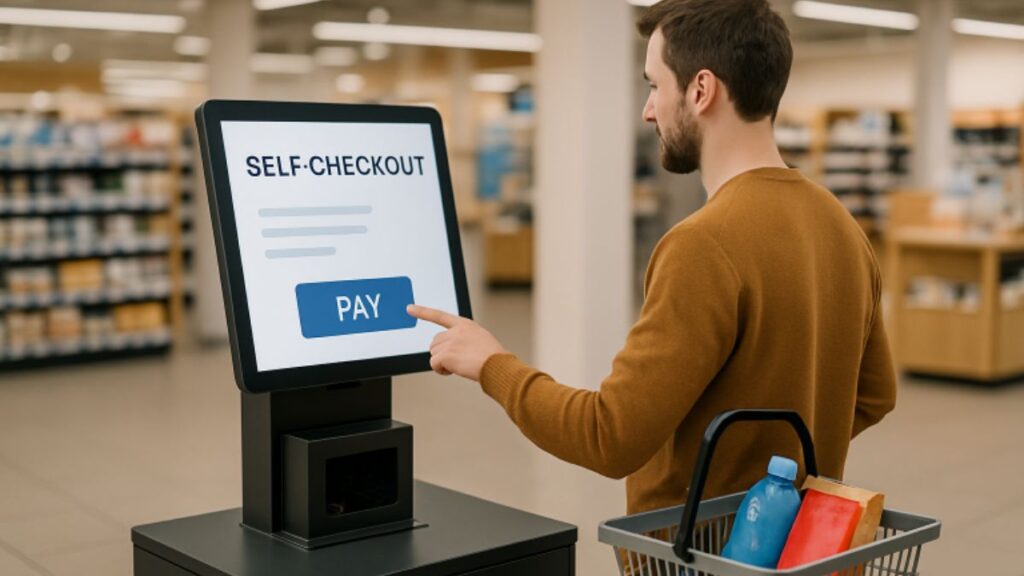In the rapidly evolving retail landscape, self checkout kiosks are transforming the way customers shop and businesses operate. As shoppers are presented with opportunities for quicker, more streamlined transactions, these automated systems are reshaping expectations for convenience and efficiency. Shoppers can now take control of the checkout process—scanning, bagging, and paying for their items independently—without waiting for a cashier’s assistance.
The shift to automated checkout is also strategic for retailers, who view these solutions as a means to overcome labor shortages, enhance operational efficiency, and improve customer satisfaction. Offering both a faster shopping experience and new possibilities for store layout and management, self-checkout kiosks are increasingly viewed as vital for any retail operation that wants to remain competitive.
These innovations are also timely as consumer demand for contactless, low-touch experiences has soared—accelerated in part by health and safety concerns during the COVID-19 pandemic. Market research shows that retailers investing in self-checkout technology can improve customer throughput, reduce employee overhead, and create a modern, appealing store environment.
For both small and large retailers, integrating self-checkout is more than just a tech upgrade—it’s a response to changing shopping behaviors and a pathway to future-proofing retail success.
Benefits for Retailers and Consumers
Retailers deploying self-checkout kiosks observe immediate operational advantages. Chief among these are reduced labor costs, as fewer cashier staff are required on each shift. Employees are free to focus on customer engagement, restocking, and other value-add activities, while the checkout process becomes largely self-serve. Additionally, the kiosks can remain available after traditional staffed registers close, catering to shoppers who visit late at night or early in the morning.
Consumer satisfaction with self-checkout technology is clear. Shorter lines and a faster checkout process rank highest among the reasons shoppers opt for these systems. According to a 2021 survey referenced by Forbes, more than 60% of shoppers now prefer automated checkout, describing it as both more efficient and more private compared to interacting with a cashier.
This enhancement in convenience extends to accessibility, as self-checkout kiosks make it easier for customers to process small or single-item purchases without waiting behind shoppers with larger carts. The ability to accommodate surge periods without requiring additional staff also translates into a smoother experience for all customers.
Retailers also note improvements in store traffic flow and layout possibilities, as kiosks are less bulky than traditional checkout lanes. This design flexibility allows stores to optimize space for more merchandise or promotional displays, further reinforcing the business case for self-checkout adoption.
Technological Advancements Enhancing Self-Checkout
Recent advances in artificial intelligence (AI), machine learning, and embedded sensors have taken self-checkout kiosk precision to new heights. AI-driven computer vision is now capable of recognizing products with minimal human input, vastly improving accuracy and speed. Notably, companies like Mashgin have pioneered systems that automatically identify multiple items in a single glance—no scanning required—offering accuracy rates near 100%.
Other technological improvements include real-time inventory monitoring, dynamic pricing capabilities, and personalized shopper interactions through loyalty apps and digital receipts. Integrated mobile wallets and contactless payment systems have also responded to growing consumer preferences for touchless transactions, helping reduce physical contact and checkout friction.
These innovations both address traditional pain points and pave the way for further automation, such as voice-activated or gesture-based checkouts, promising an even more seamless future for in-store transactions.
Addressing Challenges: Theft and User Errors
Despite their advantages, self-checkout kiosks present unique challenges for retailers, chiefly around theft and register errors. Industry research highlights a trend of increased “shrink,” or inventory loss, which is attributed to both intentional shoplifting and accidental non-scanning of products. The ability for customers to quietly bypass item scanning can make loss prevention more complex than at attended checkouts.
To address these risks, retailers have adopted strategies like placing item limits on self-checkout transactions and deploying more robust video monitoring systems. For example, Target’s policy of allowing only 10 items or fewer at self-checkout aims to minimize the likelihood of missed scans and theft, while speeding up the process for customers with smaller purchases. Additional deterrents include real-time alerts for suspicious activity and AI algorithms that flag abnormal behavior for review.
Consumer Preferences Shaping the Future
The continued rise of self-checkout is closely tied to evolving consumer preferences. Younger demographics, particularly those aged 18 to 44, gravitate toward the privacy, efficiency, and autonomy offered by self-service options. Retailers are responding by investing in more intuitive kiosks, better user interfaces, and broader support for digital wallet payments and biometric authentication.
Consumer expectations for frictionless and almost invisible retail experiences will continue to push the boundaries of what self-checkout can achieve. With contactless payment options becoming the norm, features such as facial recognition or smartphone-based check-ins are already on the horizon for the next generation of automated retail.
Conclusion
As retail continues to redefine itself, self-checkout kiosks are at the center of a growing movement toward efficiency, flexibility, and customer-centric service. Equipped with the latest technology and shaped by real-world consumer feedback, these systems are fast becoming the standard in stores of all sizes. Their ability to blend convenience with operational cost savings makes them a vital tool for retailers seeking to thrive in a rapidly evolving marketplace.







